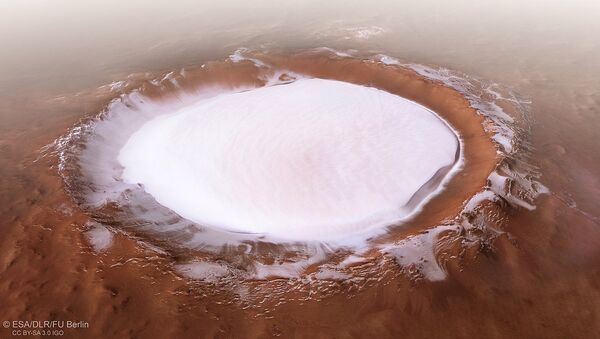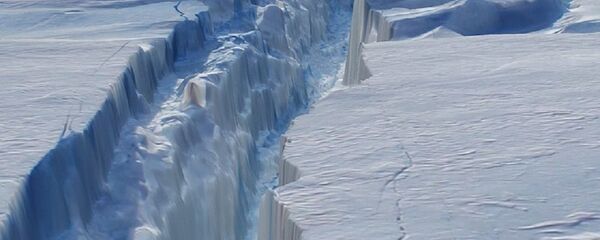A NASA glaciologist has discovered what might be a 22-mile meteor impact crater buried beneath the ice in northwest Greenland. It is unknown when the crater formed, but the scientists believe it happened more than 80,000 years ago, according to a Daily Mail report.
Located beneath Hiawatha Glacier, this is the first crater to be discovered beneath the ice sheet, Daily Mail reports.
"We've surveyed the Earth in many different ways, from land, air, and space — it's exciting that discoveries like these are still possible," said Joe MacGregor, a glaciologist at NASA's Goddard Space Flight Center, who participated in the November discovery of the crater.
"Helping identify one large impact crater beneath the ice was already very exciting, but now it looked like there could be two of them," he added.
According to data obtained by Moderate Resolution Imaging Spectroradiometer instruments on NASA's Terra and Aqua satellites along with those from NASA's Operation IceBridge, the crater is about 22.7 miles (36.5 km) wide, which makes it the 22nd largest impact crater on Earth.
The possibility exists that the large crater is actually a collapsed volcanic caldera, but those are usually accompanied by a magnetic anomaly, which is not the case with this one, the scientists say.
This is consistent with Earth's cratering record, they say.
The researchers are currently trying to determine whether the newly-discovered depression formed simultaneously with the November one. It is possible that the two craters formed when a split asteroid hit our planet. However, the age of the ice on top of the two objects is different.
The crater isn’t confirmed as a meteor impact yet – that takes further research – but it looks very likely that it is one. This discovery shows how @NASA’s ongoing study of our home planet helps us understand how it interacts with the space around us. https://t.co/lGL9yMPHx1 pic.twitter.com/ZSnVhSEYPE
— NASA ICE (@NASA_ICE) 11 февраля 2019 г.
"The ice layers above this second crater are unambiguously older than those above Hiawatha, and the second crater is about twice as eroded," MacGregor said. "If the two did form at the same time, then likely thicker ice above the second crater would have equilibrated with the crater much faster than for Hiawatha."


